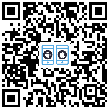

|
不久前,生命在一周内给了我们一记三连击。6月5日,我们听闻凯特·丝蓓自杀。6月6日,美国疾病防控中心(Centers for Disease Control and Prevention, CDC)发布的报告显示,自1999年美国军医总长官宣布自杀是可预防的公共健康危害,自杀人数上升了25%。而在6月8日,我们一醒来便是安东尼·伯尔顿结束自己生命的消息。 这样的案例和数据令人震惊。丝蓓为崇尚超高品味的时尚产业注入了色彩与妙想,伯尔顿为忠于传统的烹饪世界带去了他“坏小子”式的放荡不羁。他们的产品——手提包和美食之旅——曾为多少人带来快乐。实在令人费解。二人怎会选择轻生? 我们仍无法确切理解人为何会了却自己的生命。但我们却明白一些因素能够增加自杀风险,包括拥有枪械、孤独、社交孤立,以及缺乏心理健康服务。 要减少自杀人数,我们就要将枪械视作安全问题,而不只是《第二修正案》(Second Amendment)的问题。2016年,23000人使用枪械自杀。研究表明,购枪背景调查和等待期能够显著减少自杀。 没有确诊精神疾病的人就能拥有枪械吗?美国疾病防控中心的报告显示不然:因枪械而死亡的人数中,未确诊精神疾病者(55%)明显多于确诊者(40%)。这表明,要挽回生命,我们必须将所有人口视作枪械安全问题的关注对象。 同时,我们必须竭力将文化层面的关注重点从名与利转移到构建团体和联结。心理学家和自杀学学者托马斯·乔伊纳指出,自杀的主要诱因之一是孤独。美国的一大福祉在于,我们能成为想成为的任何人;而美国的一大悲剧在于,大多数机构——从学校到企业——都期望我们以陪伴朋友和家人的时间为代价以取得成功。 我们应该从学前教育起就关注幸福体验,而不是等到某一名高中生说出他想死的意愿。我们想让中小学说,“花时间陪陪家人,别光顾着作业。”我们想让大学说,“我们更希望在你的申请材料里看到一张你与家人其乐融融的照片,而不是又一次课外实践。”我们还想让股东说,“加班可贵,员工与家人共度的时间同样可贵。”我们越是与所爱之人共度时光,一旦出了任何差错就越容易觉察到,也越容易为家人找到能提供帮助之人,并协助他们构建有意义的生命。 我们还应该让科技服务于社会公益。这就意味着团结科技大企业,分析数据,从而判定危害的模式,并实施管控。社交网站已经学会唆使用户购买产品。假如我们利用同一信息能够掌握哪些诱因可以疏导轻生的苗头,从而预防自我伤害?假如年轻群体自杀风险的增加与使用智能手机有关——正如2017年一项颇有影响的研究所指出,科技大企业就有道德义务立即与自杀预防专家展开合作,以分享数据,开发可投入市场的技术手段介入,从而预防自杀。 上周,自杀的消息影响了我们每一个人。这周,我们以自杀预防方面的努力——终究也是为希望所作的努力——向前迈进。假如您有志挽回生命,请多多留意您所爱、所关心的人们,即便他们看起来像活在梦里。请为您当地的救助热线给予捐助。请致电您所选举的人民代表,告诉他们要拨款于预防自杀,正如我们拨款于天花。(BT365的网址是多少) 注:乔纳森·辛格是芝加哥洛约拉大学社会工作学院(Loyola University Chicago’s School of Social)的副教授,也是美国自杀学学会(American Association of Suicidology)的书记。 译者:沈昕宇 |
Life handed us a one-two-three punch last week. On June 5, we learned of Kate Spade’s suicide. On June 6, the Centers for Disease Control and Prevention (CDC) released a report showing a 25% increase in suicide deaths since 1999, the year the U.S. Surgeon General declared suicide a preventable public health problem. And on June 8, we awoke to the news that Anthony Bourdain took his own life. The deaths and statistics were shocking. Spade added color and whimsy to a hyper-intellectual fashion industry. Bourdain brought his bad-boy irreverence to a culinary world devoted to tradition. Their products—purses and food exploration—brought joy to so many people. None of it made sense. Why did they kill themselves? We still don’t know exactly why people die by suicide. But we do know some things that increase risk for suicide, including access to firearms, loneliness and social isolation, and inadequate mental health services. If we’re going to reduce suicide deaths, we need to see firearms as a safety issue, not a Second Amendment issue. In 2016, 23,000 people killed themselves using a firearm. Research has shown that firearm background checks and waiting periods significantly reduce suicide. Should we restrict gun access to those without a known mental illness? Not according to the CDC report: Significantly more people without a known mental illness (55%) died by firearm than did people with a known illness (40%). This suggests that if we want to save lives, we need to make firearm safety a population-wide issue. We also need to shift our cultural priorities away from fame and fortune at all costs and toward community and connection. Thomas Joiner, psychologist and suicidologist, suggested that one of the main factors in suicide is loneliness. The great American promise is that we can be whatever we want to be. The great American tragedy is that most of our institutions—from schools to corporations—expect us to get there by sacrificing time with friends and family. We need to address well-being starting in kindergarten, not wait until a high school student tells us they want to die. We need schools to say, “Spend time with family, not on homework.” We need universities to say, “We’d rather see a photo of you having a great time with your friends than another extracurricular activity on your college application.” And we need stockholders to say, “We value employee family time as much as overtime.” The more time we spend with our loved ones, the easier it is to see when things are going wrong, connect them to people who can help, and help them build lives worth living. We need to harness technology for social good. This means partnering with tech giants to analyze data so we can identify patterns of risk and automate interruptions. Social networks have learned how to nudge users to buy products. What if we could use that information to learn which nudges redirect emerging suicide risk and prevent self-harm? If the rise in youth suicide risk is correlated with smartphone use, as an influential 2017 study suggested, there is an ethical imperative for tech giants to partner with suicide prevention experts to share data, develop scalable automated interventions, and prevent suicide. Last week we were all affected by the tragedy of suicide. This week we move forward with the work of suicide prevention, work that is fundamentally about hope. If you are inspired to save lives, check in with people you love and care about—even if they seem like they are living the dream. Donate to your local crisis hotline. Call your representative and tell them to fund suicide prevention at the same level as we fund smallpox. There’s always something you can do, no matter how small. Jonathan B. Singer is an associate professor at Loyola University Chicago’s School of Social Work and the secretary for the American Association of Suicidology. |
最新文章




